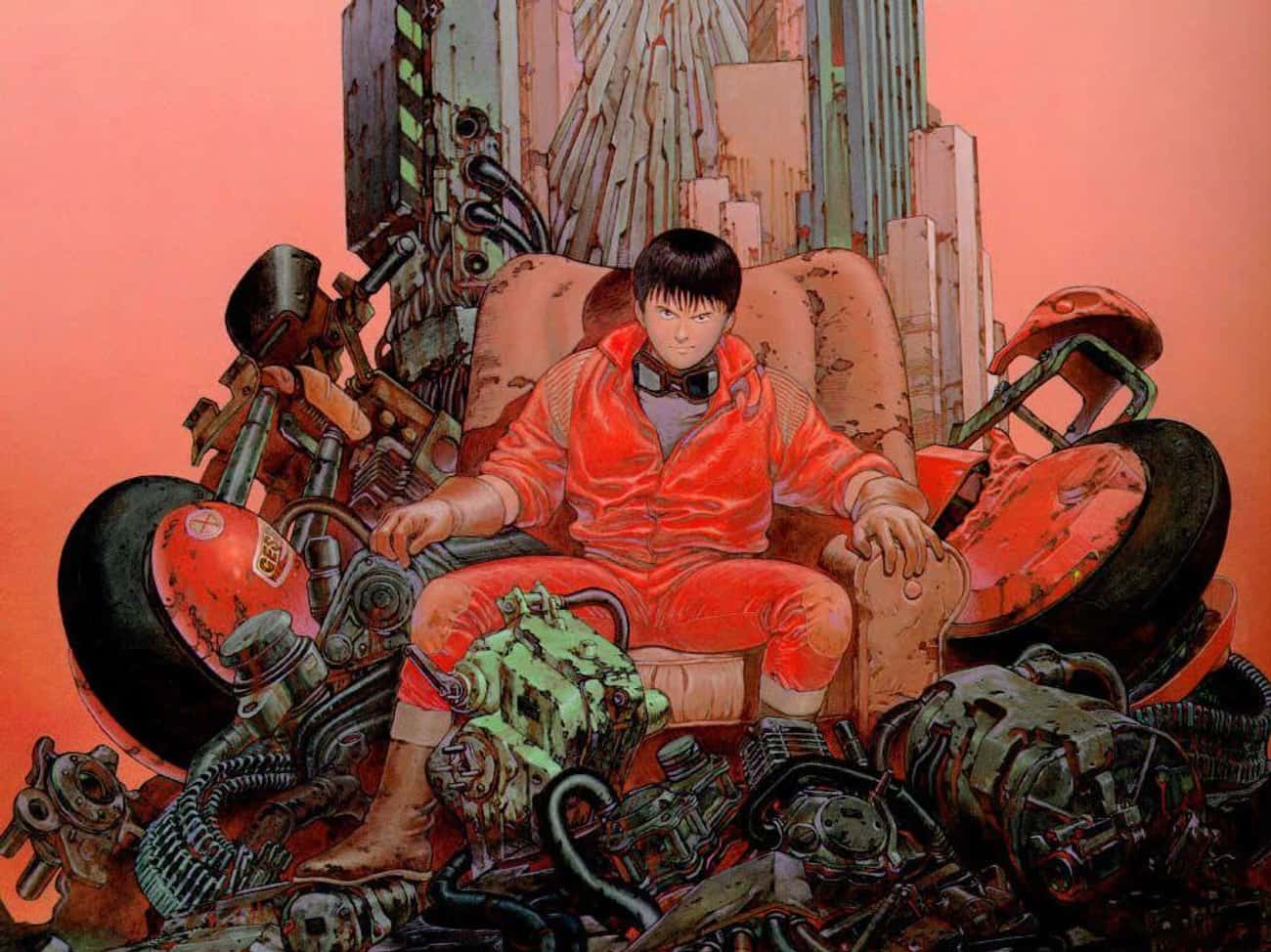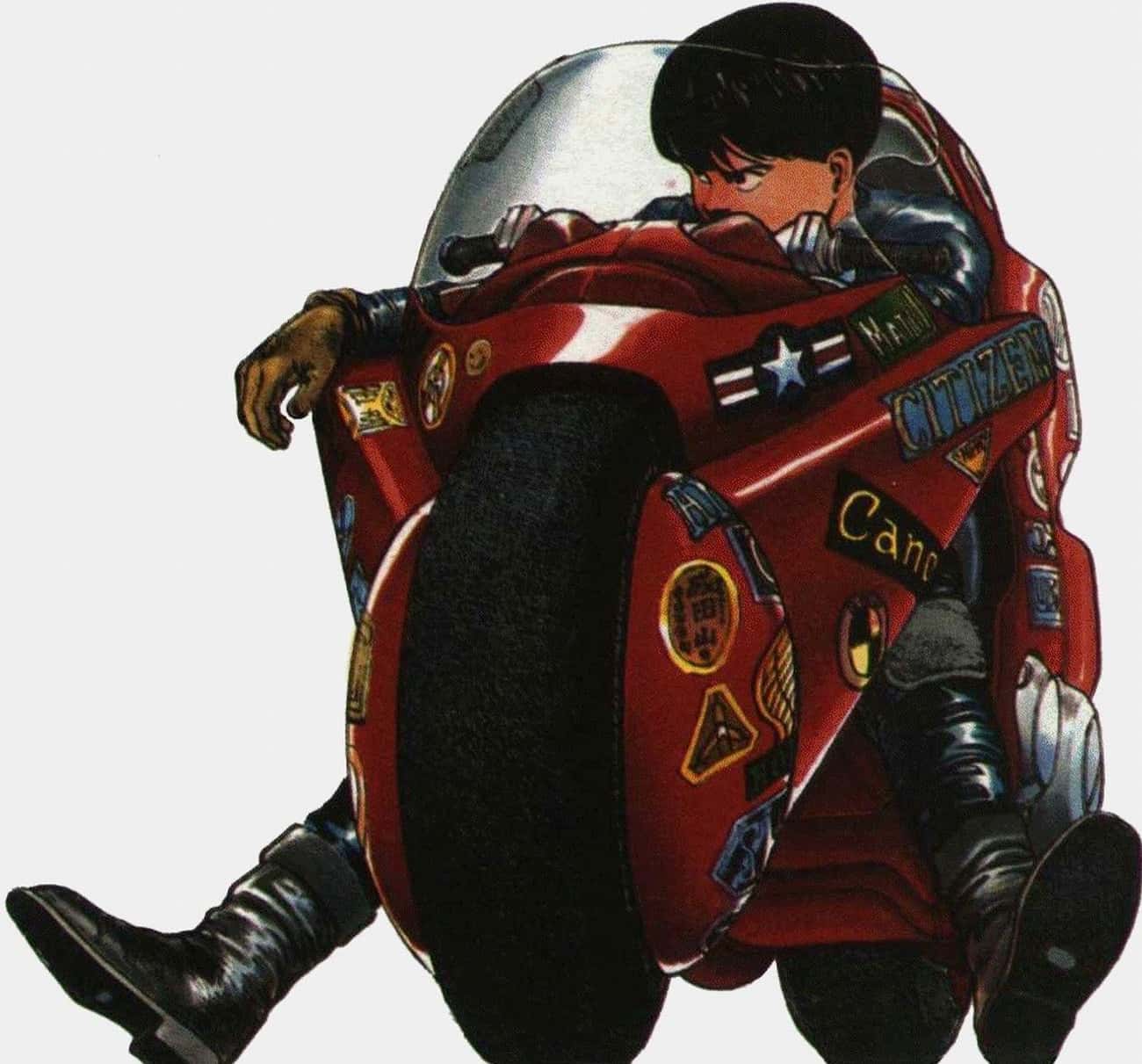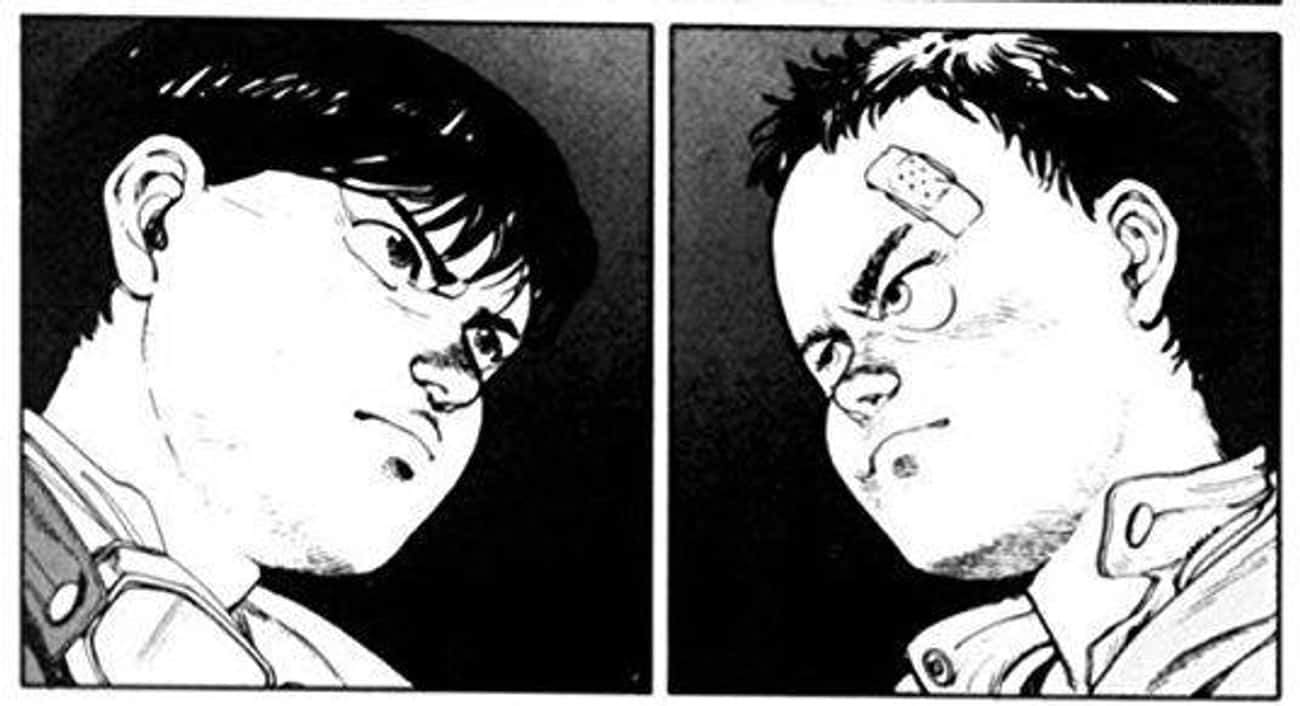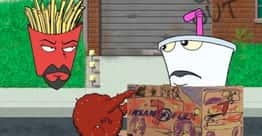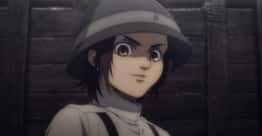14 Things You Don't Know About Akira If You Never Read The Manga
The Films Cuts Out The Middle Section Of The Story
Photo: Akira / Dark Horse ComicsThe anime version of Akira ostensibly bookends the sprawling story told by the manga. Both are spearheaded by the same creator, Katsuhiro Otomo, and the two works start and end on the same plot points. However, the Akira manga takes a longer, richer, and more thought-provoking path to its galaxy-creating conclusion.
The anime version of Akira lacks a larger exploration of the Mad Max-style world of Neo-Tokyo, and the battle for supremacy fought between the city's government and rebel groups is mostly implied. It also does not provide a deep examination of the inhuman psychics' origin story, and the characters' drug problems are much more fleshed out in the written version. The Akira movie is a delicious taste of Otomo's work, but anyone wanting the full scoop needs to check out the entire manga series.
- Photo: Akira / Dark Horse Comics
Kaneda Shotaro is basically the same person in the anime and the manga. Through thick and thin, Kaneda remains a gold-hearted yet regretfully spontaneous rebel who fearlessly leads a biker gang called The Capsules. However, the manga makes Kaneda share the spotlight with a variety of other interesting characters.
Akira the manga is a larger-than-life story that follows the lives of several different people inhabiting Neo-Tokyo. While Kaneda is still a major player, there are also other gang members fighting for control of the city, as well as a police force dead set on maintaining total control. Dangerous psychics like The Eggman — a heavily-built man who fights off US marines — are also residents of Neo-Tokyo, but you don't get a glimpse of that in the anime.
There's more to the world of Akira than Kaneda, but the anime only had enough time to share his side of the story.
Kaneda Isn't Here To Save Tetsuo
Photo: Akira / Dark Horse ComicsThe backbone of Akira is the brotherly relationship between Kaneda and Tetsuo. Both men have known each other since they were kids living at an orphanage, and they've looked out for each other ever since. In Kaneda's case, he's been more of the protector than the protectee.
Their relationship causes Kaneda to take responsibility for stopping Tetsuo after his highly destructive powers become apparent. In the anime, Kaneda's ultimate goal is to guide Tetsuo back to the path of good, but in the manga, he's much more willing to put Tetsuo down in order to save the world. This is exemplified by the way the pair's final fight plays out; in the anime, the battle begins with playful banter, as Kaneda is hoping to reason with his old friend. In the manga, Kaneda just goes straight for the kill.
- Photo: Akira / Dark Horse Comics
Movie viewers might have found it odd that Akira — the titular god-like psychic child — never physically appears in the anime. Outside of premonitions, Akira only exists as remnants that were cryogenically frozen underground for future scientists to study.
In the manga, however, Tetsu unleashes Akira from his underground prison, and he quickly becomes a deity for the rebellious youths of Neo-Tokyo to worship. Despite being a major player in the manga, Akira remains a mysterious character, and his presence only serves to underscore his terrible power.
Tetsuo And Akira Join Forces
Photo: Akira / Dark Horse ComicsTetsuo never gets the opportunity to shake hands with Akira in the anime, on the account of him being leftover frozen test tubes. However, in the manga, Tetsuo joins forces with Akira after awakening him from his cryogenic slumber. Akira is certainly the psychic brawn of partnership, and Tetsuo acts more like the brains, due to the titular child's lack of emotional presence.
While he carries a few child-like quirks, the Akira in the manga is mostly an empty shell of his former self, which makes him easy prey for manipulation. A standout scene from the manga involves Akira permitting Tetsuo to tear a massive hole in the Moon's surface as a demonstration of their deadly combined power.
Tetsuo Isn't Very Sympathetic
Photo: Akira / Dark Horse ComicsBoth the anime and the manga portray Tetsuo as the runt of the pack. He's not the strongest fighter, nor is he the smartest, and he's constantly being bossed around by others. For this reason, it's not exactly surprising when Tetsuo uses his newfound psychic powers to finally beat respect into his peers.
In the manga, Tetsuo's character seems totally willing to become corrupted by his immense power. In contrast to this, the anime provides more scenes that explain why a weak-willed man like Tetsuo would give in and become evil. For example, in the anime, Tetsuo's rage is fueled in part by his failure to protect his girlfriend Kaori, who was physically assaulted by rival gang members. In the manga, Tetsuo exploits Kaori after she seeks his militia out in hopes of finding medicine for her sick father. Their relationship is horrifically toxic, and he regularly abuses her to appear tough.
Characters' Drug Use Is Much More Explicit In The Manga
In the Akira movie, characters are regularly seen popping ambiguous pills. While it's clear that not every pill seen in the film contains the same substance, the effects of the drugs are largely implied. The manga doesn't beat around the bush, and makes it clear from the start that pretty much all the characters have drug problems. When the story starts, Kaneda and his friends are explicitly shown trading "stimulants" in class, and their behavior mirrors that of real-life children who abuse ADHD medications like Adderall or Ritalin.
Shortly after Tetsuo starts guzzling pills by the handful, it's explained that the government started manufacturing a drug that boosts psychic energy as a means of controlling their new army of telekinetic children. When normal people take these pills, they suffer brain aneurysms, and die horribly painful deaths. Because of this, Tetsuo spends a lot of time in the manga dosing his underlings, just to watch them freak out. It's a horrific aspect of his character that isn't quite as obvious in the film.
Kaori’s Death Is Different Than The Anime
Photo: Akira / TMS EntertainmentKaori's love affair with Tetsuo is considerably darker in the manga, as is her final departure. In the movie, Kaori becomes a victim of Tetsuo's fleshy transformation, as she's squashed within his gigantic mass. In a striking change, Kaori's death in the manga is surprisingly grounded.
After learning that an aide of Tetsuo is planning on betraying him, Kaori runs to warn him, but is shot in the back by the betrayer. Tetsuo learns of her death, and eliminates the conspirators that were working against him. He tries to revive her with his psychic powers, but learns there are limits to what even he can do. After failing to save her, Tetsuo stores Kaori's body in Akira's cryogenic chamber, in the hopes of preserving her.
Kei Is A Way Cooler Character In The Manga
Photo: Akira / Dark Horse ComicsDespite being a central character, Kei's treatment in the anime is a step down from her portrayal in the manga. Her psychic abilities as a medium are demonstrated throughout the movie, but only the manga explains how she developed her powers. She also plays the archetypal "girlfriend" role in the movie, while in the manga she's defined as a mysterious resistance fighter. All of her best moments are also unfortunately only found in the later half of the manga's storyline, wherein a full-fledged assault is launched against Tetsuo.
Kaneda and Kei’s Relationship Is Fleshed Out
Photo: Akira / Dark Horse ComicsThe chemistry between Kaneda and Kei is notably different when it appears in the film. In the anime, Kaneda and Kei have a flirtatious dynamic from the first moment they meet. It's still consensual, but it feels more like the typical "action hero love interest" trope than a real, mature partnership.
In the manga, their relationship is given more time to develop into a fully romantic one, as they learn about each other during the time they spend imprisoned underground together. At one point, they even share a passionate kiss. Kaneda's love for Kei and his determination to protect her is one of the reasons why he's more willing to put down Tetsuo in the manga. He knows Kei will risk everything to take out Tetsuo, and he wants to beat her to the punch.
Joker Teams Up With Kaneda
Photo: Akira / Dark Horse ComicsAnime-only viewers may be shocked to learn that Kaneda and Joker — the leader of the rival gang The Clowns — put their differences aside in the manga and team up to take down Tetsuo. After Neo-Tokyo is destroyed by the awakening of Akira, Joker and other rival gangs band together for survival.
When this happens, he does away with the clown makeup in favor of tire track markings all over his face. Joker puts his engineering skills to good use by repairing everyone's motorcycles, and helps refurbish some flying vehicles stolen from the army. It goes to show how a second apocalypse can turn enemies into friends.
Lady Miyako Is Actually An Interesting Character
Photo: Akira / TMS EntertainmentIf there's one important player in the manga that got severely shortchanged by the anime, it's Lady Miyako. In the film, she appears in one brief scene, and comes off as a religious zealot. However, Lady Miyako plays a significant role in the Akira manga, as she aids Kei and Kaneda on their quest to stop Tetsuo.
Miyako's a former test subject who possesses the power of clairvoyance. After the second psychic explosion of Neo-Tokyo, she shelters survivors at her temple, and ultimately sacrifices her life in the final battle against Tetsuo. Lady Miyako is an incredible character who sadly didn't get the love she deserved in the anime.
The Espers Are Given A Real Backstory
Photo: Akira / TMS EntertainmentThe creepy psychic kids known as The Espers play vital roles in the story of Akira. The government experimented on a bunch of children, which resulted in some of them unlocking latent psychic powers.
The kids are better defined in the manga, as you learn more about their tragic backstory and how the experimentation on their fellow test subject, Akira, led to the original destruction of Tokyo and the start of World War III. If you think about it, Tetsuo is test subject 41, yet there are only five other test subjects present in the movie (Akira, the three children, and Miyako). That means that at one point, there were 35 more children, only none of them lived long enough to see the start of the story.
The Final Showdown Is Different
Photo: Akira / Dark Horse ComicsWhile the final fights between Tetsuo and Kaneda contain similar elements, the two battles differ greatly in the anime and manga. The manga version has Kaneda and his biker comrades launch an all-or-nothing assault on Tetsuo and his followers, while the government tries to eliminate him with an experimental weapon called the Satellite Orbital Laser. Kaneda and Kei engage with Tetsuo until he succumbs to his powers and transforms into the body horror creature from the anime.
Thanks to the help of The Espers — which includes a resurrected Takashi — Akira comes to, and cancels out the psionic reaction unleashed by Tetsuo. With Tetsuo's reign of terror finally over, Kaneda and his fellow bikers reclaim Neo-Tokyo as their own, and drive off to a better future. So, in a way, the anime's ending isn't too far off from the original's. However, it does lack the clarity and magnitude of the manga, and the grand sense of accomplishment that comes with eight years worth of storytelling.


